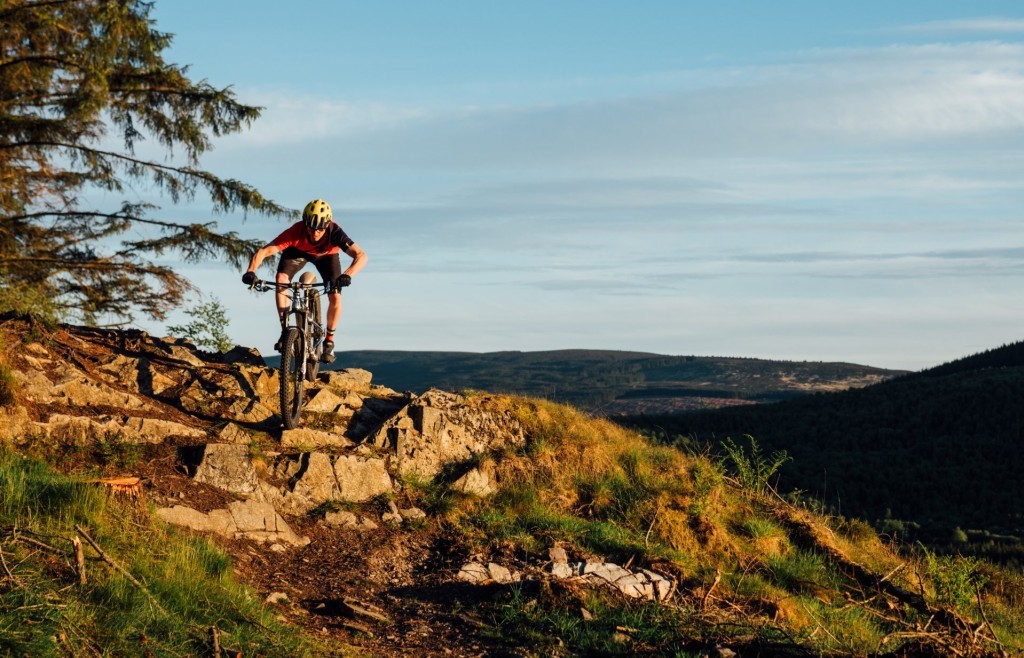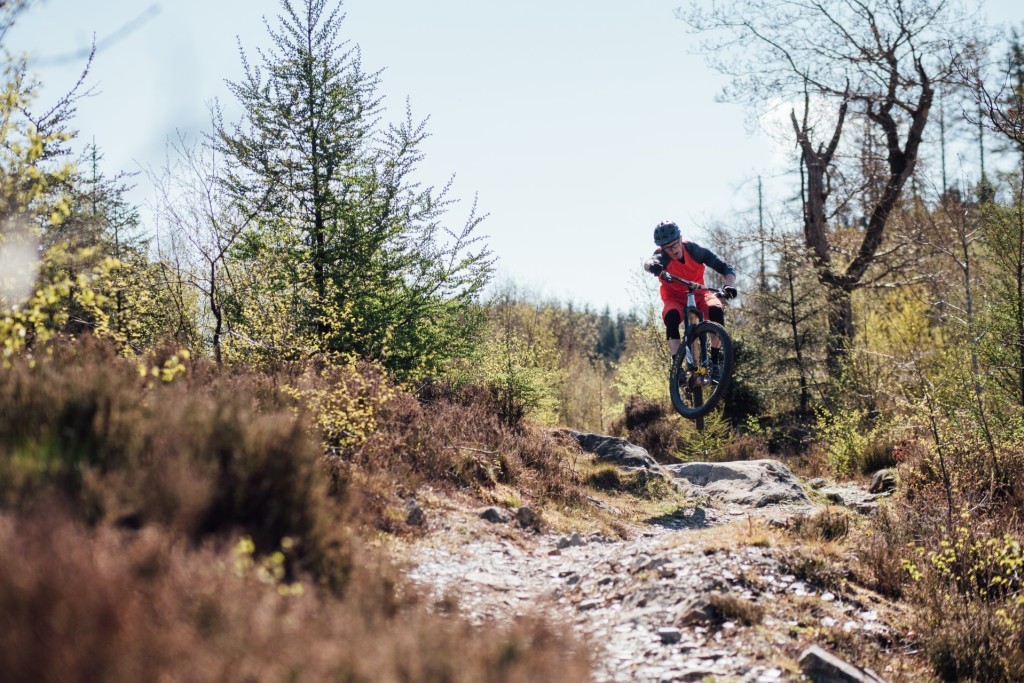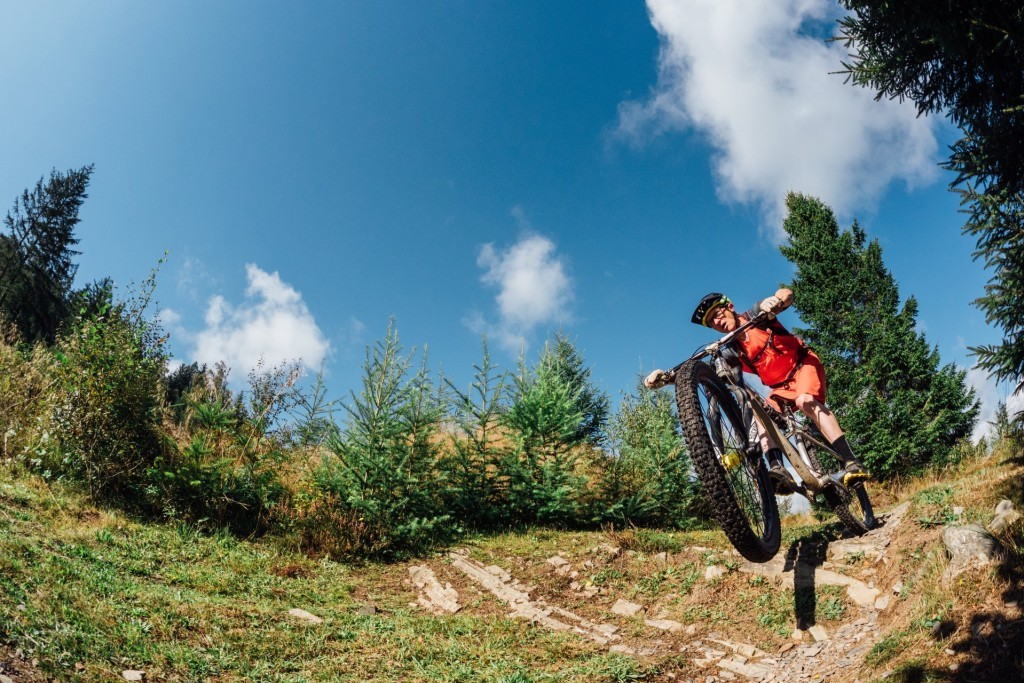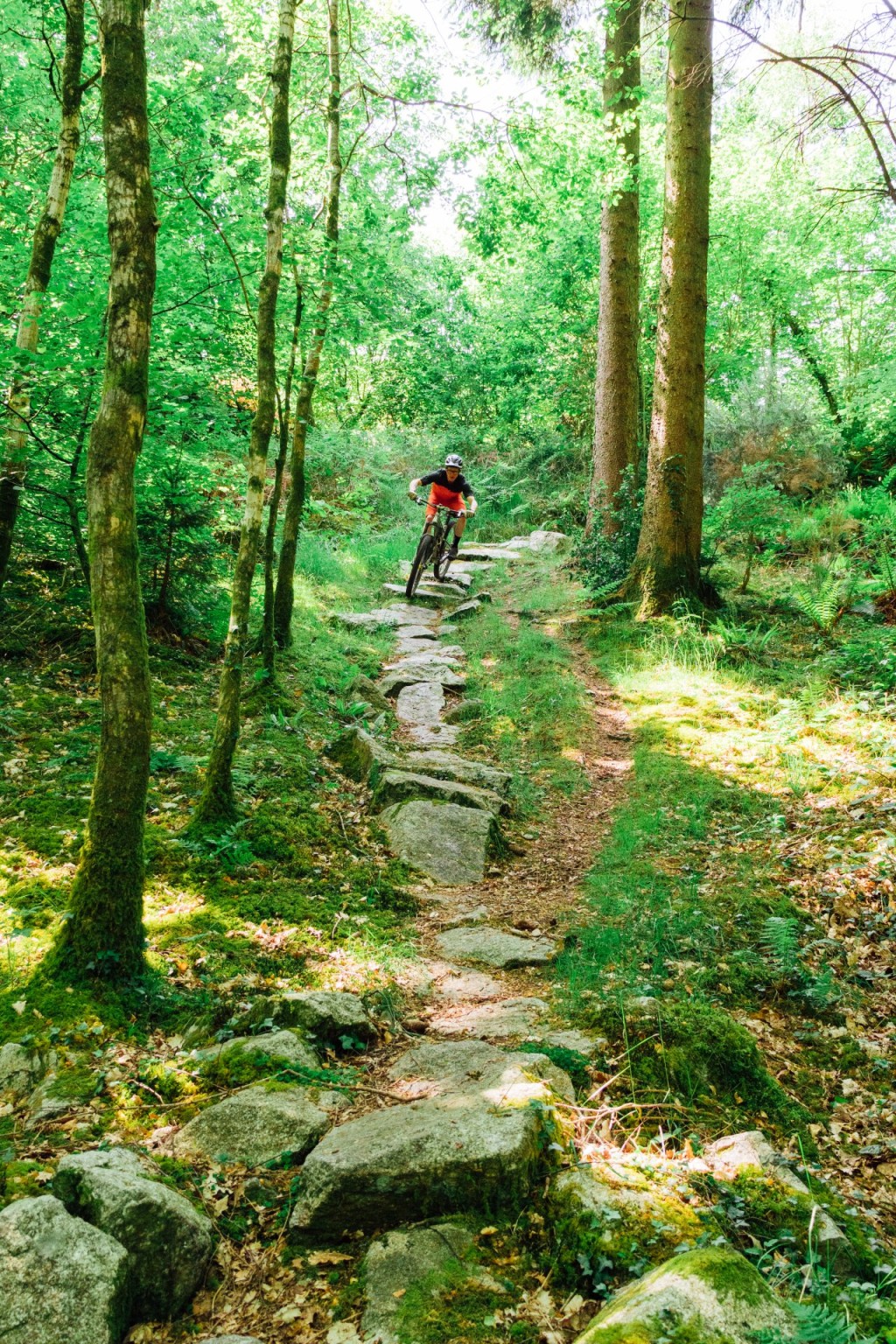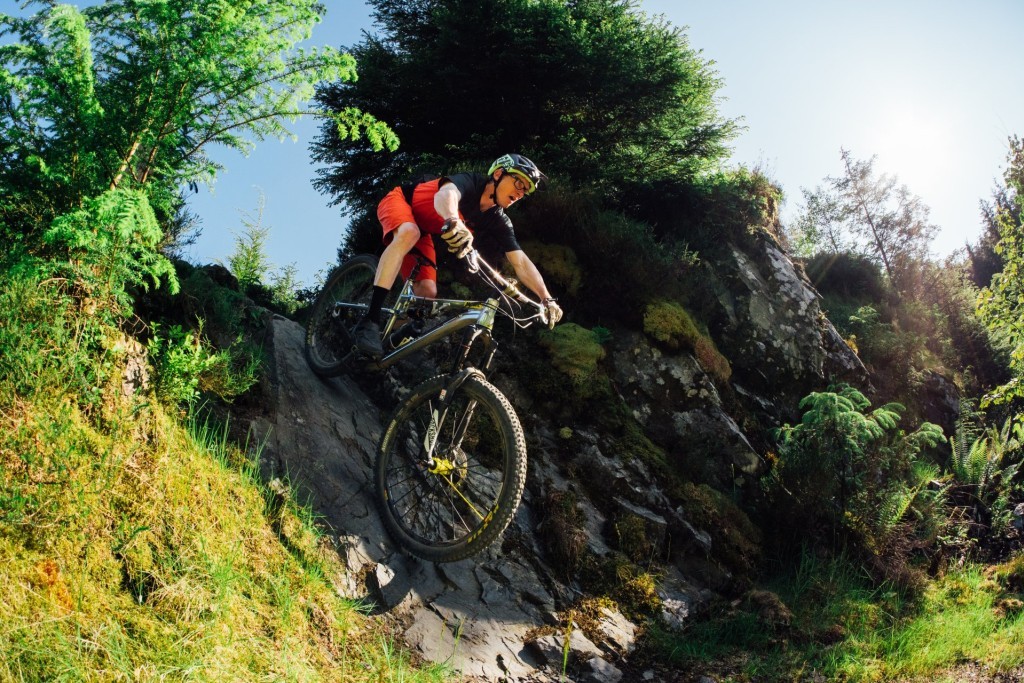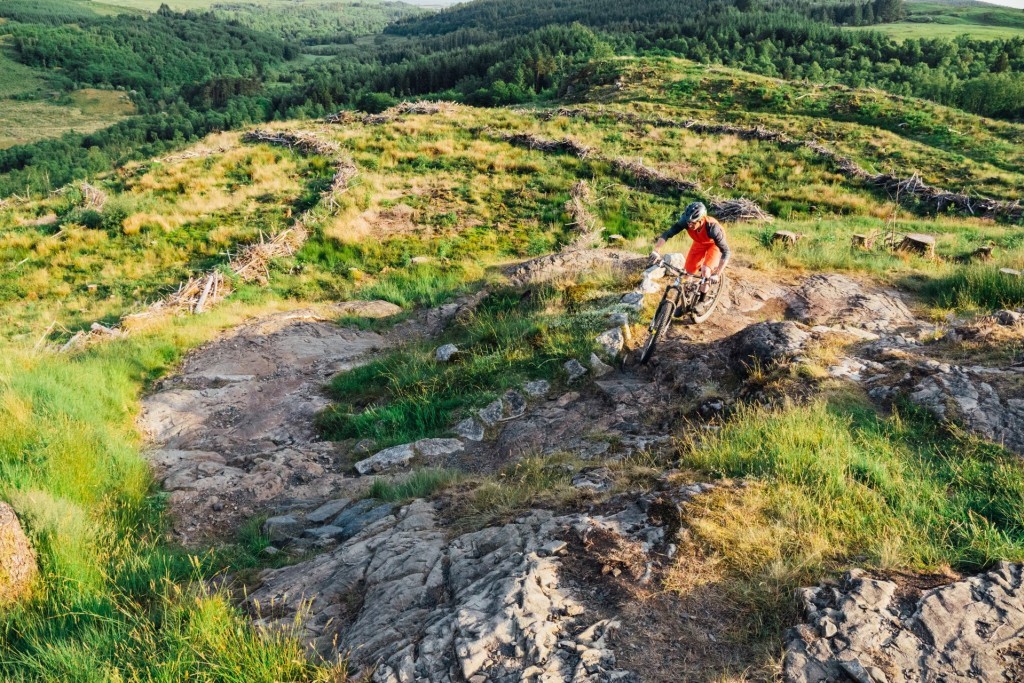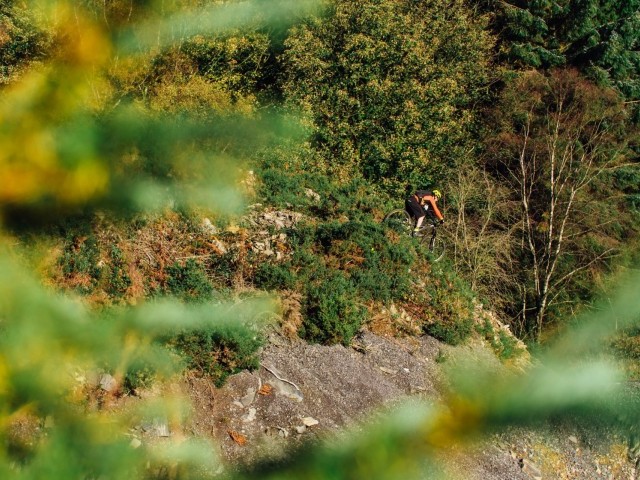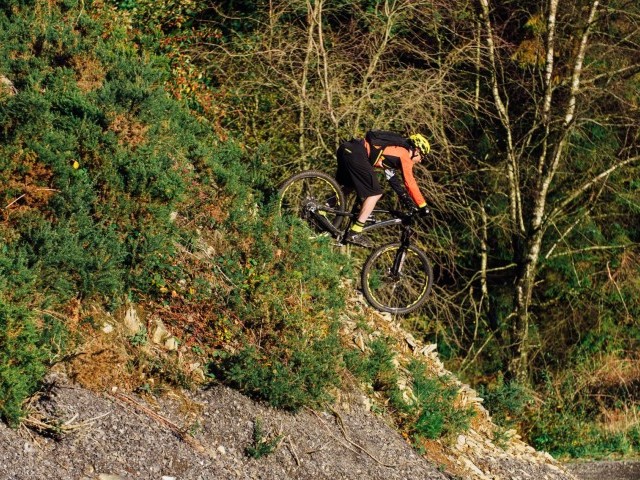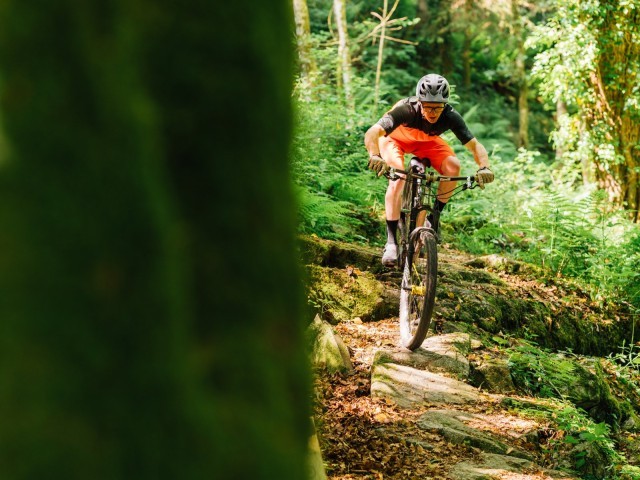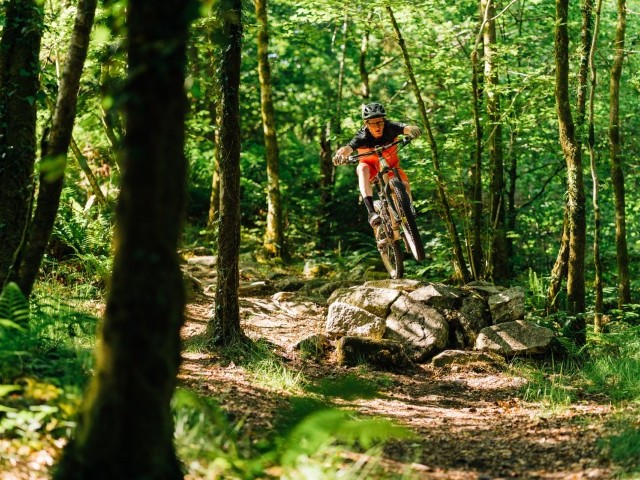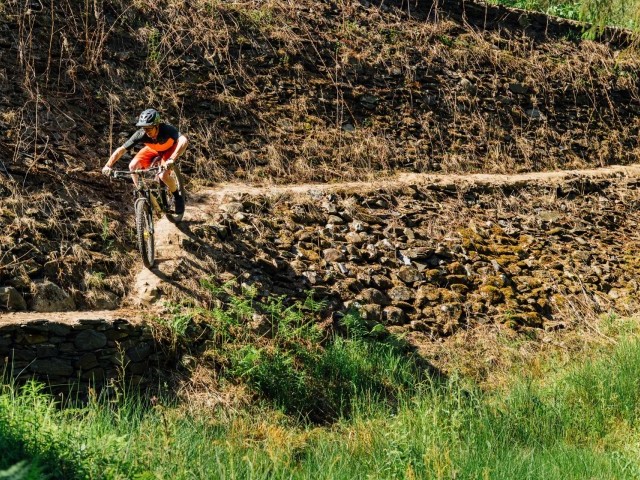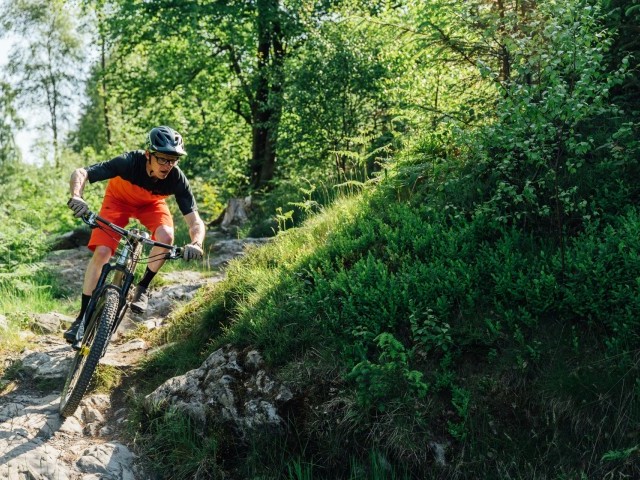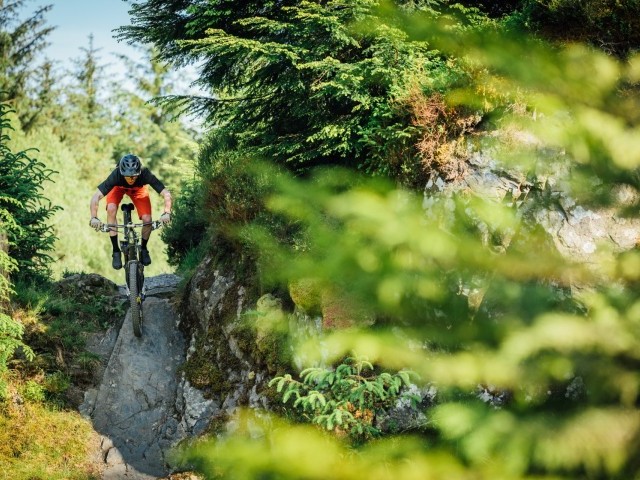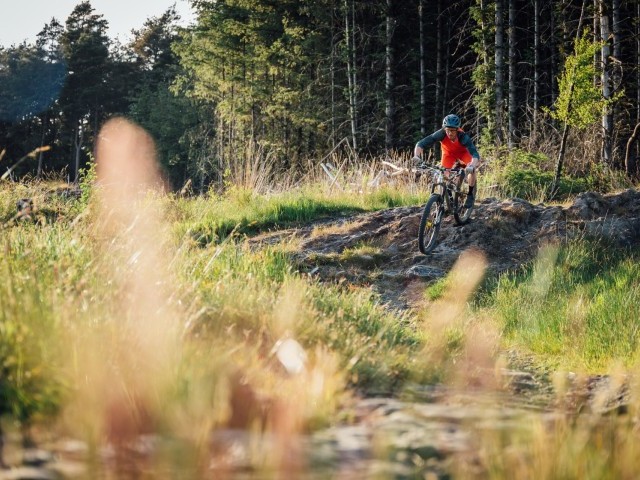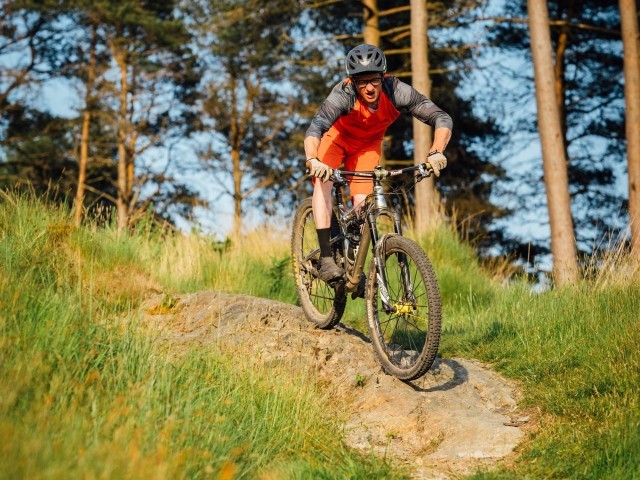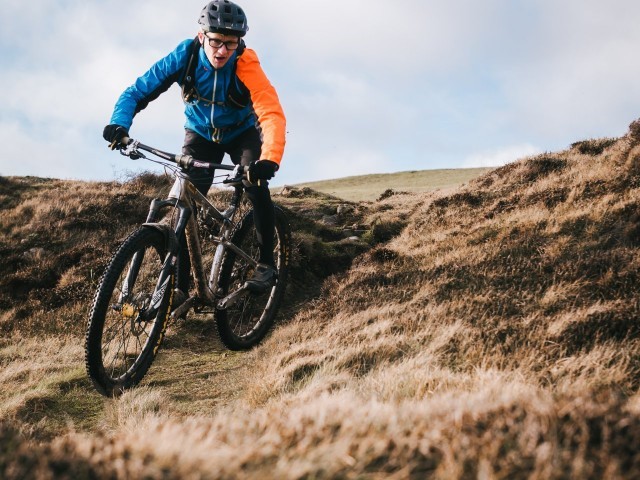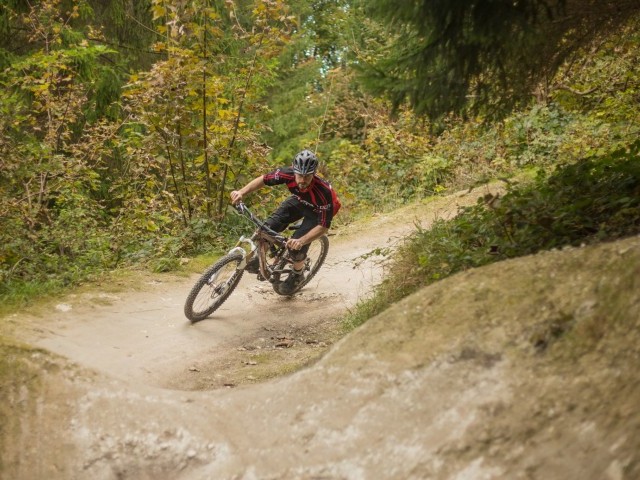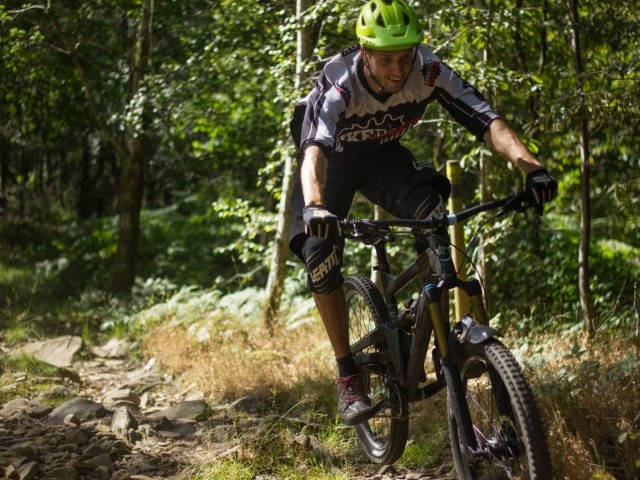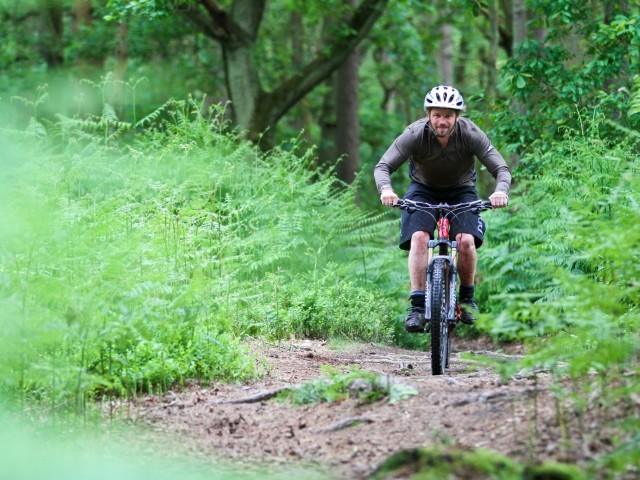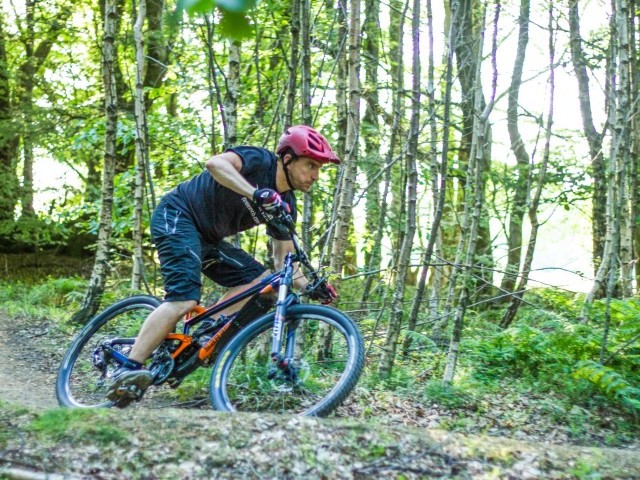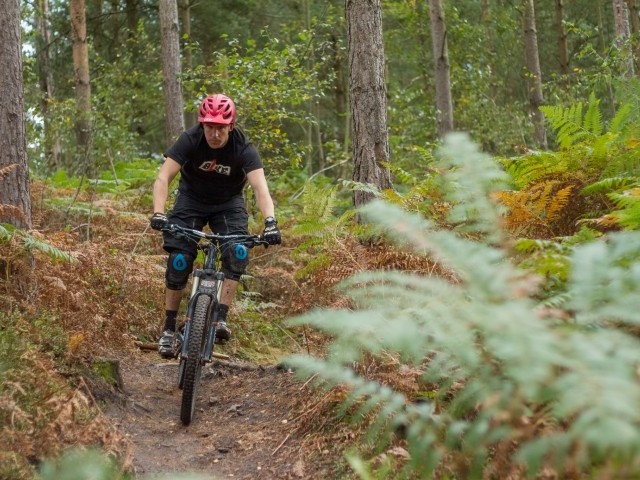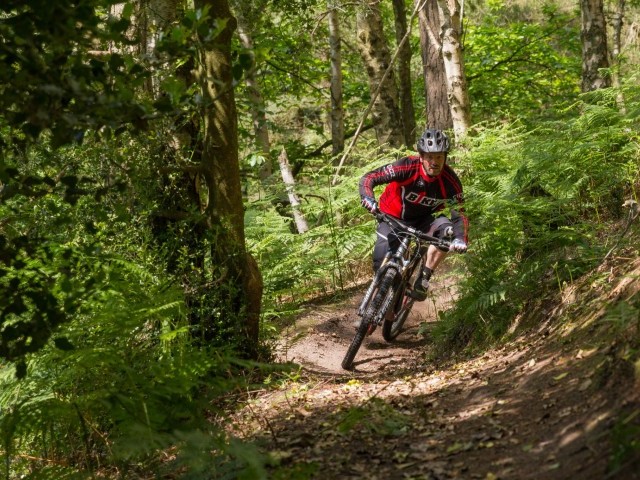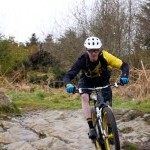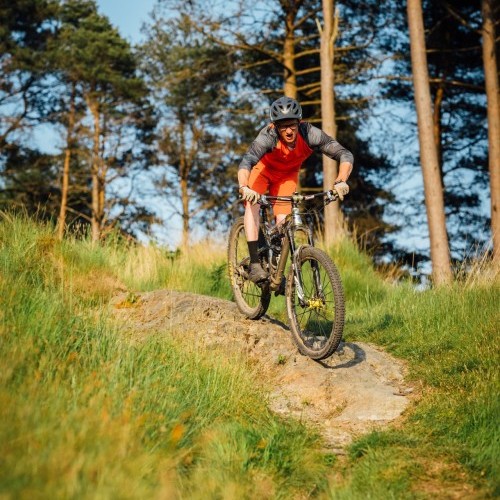
Crags and Slabs
Technique / Terrain
Introduction
Bedrock, boulders, and slick slabs of stone are some of the key elements that make up the quintessential mountain bike experience. For those of you who are lucky enough to live in such areas, these staple trail elements are less demanding. But as many riders live miles away from the mountains, some of you may find yourself getting in above your head when coming across these types of features. But, fear not, as we will help you ride rocks with added confidence, drop slabs with style and master the world of igneous, sedimentary, and metamorphic matter.
Let’s start by looking at some of the common problems you are likely to encounter when dealing with rocky ground.
- Getting hung up/stalling out on a boulder, crag, or face in the bedrock.
- Smashing pedals and cranks on big rocks and bedrock.
- Being pushed off-line by sloping rocks, ridges in bedrock, and off-cambers in slabs and crags.
- Loss of traction creating wheel spin (the turbo trainer moment).
- Loss of traction due to loose material on the rock.
So how can we eliminate some of these classic errors and what can we do to sharpen our skills if we live in an area where there are no rocks to play on?
First up getting hung up, this typically happens when you have a lack of momentum or you have failed to unweight or lift a wheel. Every face and edge in the rock is robbing your speed, only the sweet little back slopes will give you an added boost of momentum. Not to sound like a broken record but vision is key, looking ahead and reading the type of rock you are passing over will help you set your speed and select your line.
Rounded rocks will also hinder your progress, washed rocks like this are also more likely to push you off-line. Speed control is key but having the right dose of momentum will only get you so far, if you sit rigid on the bike then you stand a greater chance of getting hung up, stand up, and unweight the wheels when coming into contact with larger edges. At slower speeds, even small edges will want to rob your speed, when crawling through rocky ground at slow speeds pay attention to those smaller hits. If you are grinding up a steep rock slab you may need to pull a small wheelie to clear cracks and ridges in the bedrock or slab, typically you will be standing up for maximum power so make sure you practice wheelies while standing up as well as seated.
You will be presented with rocky outcrops that require you to go up and over them, blind crests need approaching with care as there may be un-rollable terrain beyond the feature, if in doubt have a look first. A common mistake on up-and-over features is a lack of commitment on the approach, don't be shy here, give it a boost on the way into the feature as it is easier to slow the bike on the crest rather than have to pedal at the peak of the outcrop. If the transition onto the rocks isn't that smooth then you will have to unweight the front wheel to make it, on severe transitions and steep gradients will mean that both wheels will need to be lifted up onto the feature.
By doing the speed work on the approach we can help eliminate that common mistake number 2, smashing pedals and cranks. When your speed is robbed by those cheeky rocks then you will have to drive the cranks around, we can deploy mindful revolutions of the cranks in key clear space, knowing where you are in the crank stroke will help you match the gear ratio to avoid having the cranks in the vertical at just the wrong time. More often than not in rocky terrain you need to drive a slightly larger gear to avoid having the cranks in the vertical too frequently.
This obviously requires strength and stamina so spinning that gear like some celebrity cyclist all the time will do you no favors in the world of crags and slabs. Mix up your cadence so you can swap styles to suit the terrain, read the trail ahead by looking up and not into the feature to enable you to set your speed and select the right gear. There is a delay in the engagement of the freehub, cheaper hubs will have a greater delay over the more expensive after-market versions, this is one reason they cost a great deal more. Getting to know your drive system will help you pre-empt that delay, using a gear ratio that is too small combined with that delay may mean you are pushing on the pedals for as much as a quarter of a pedal stroke before anything happens! As you can now visualize this takes the crank from horizontal (coasting into the rocks) to vertical (loss of speed and need to pedal).
This is really common on eBikes as the process is exacerbated by the delay in the speed and torque sensors engaging the motor, the other consideration on eBikes is the over-run having delivered a shot of power, get ready for that boost of speed as you stop pedalling. Sometimes a cheeky little backpedal can help engage the freewheel sooner, this also gives you a longer driving stroke on the crank before you pedal back to maintain clearance between shiny bits and mother earth.
Working on unweighting the wheels can also help to avoid that crank-smashing moment, when you are pinched and can not pedal you can often unweight the bike and lift it through the gap before getting back on the power. The unweighting trick can also be the savior in scenario 3 so it is a good thing to work on.
In scenario 3 rocks push us offline, as I have written in the past line choice should be visualised but not set in stone (if you pardon the pun). Having a rigid thought/visualisation process will only lead to disappointment and skin loss, you have to be flexible in both body and mind. As sure as eggs are eggs you will have to re-plot your desired line having slid or being nudged from your first choice.
Your new trajectory will one day be unsavoury and an inevitable collision course will be on the cards, if you can react quick enough then by unweighting the bike that inevitable wheel smashing skull cracking hit can be eliminated. Your problems may not be over at this point as more hazards ensue, this will require further nerves of steel and cool calm collected responses from mind and body. Easier said than done but at all costs don’t fret, being relaxed will often see things come back to a more savoury outcome. I hasten to add however that in these types of scenarios, there is a distinct difference between cool calm collected pilots and rag-doll passengers. Rag dolling through a section and living to tell the tale comes down to luck and not skill, and yes one day that luck will run out. Unstitching errors and taking control of a situation comes with direct experience, that involves practice, patience, and persistence.
There is no way around it, you have to put yourself in harm's way to experience such things. A calm mind is the product of practice and exposure to situations, the body may appear to be relaxed but like a ballet dancer or Shaolin monk, there is strength to the grace of movement, direct experience and cross-training are key to achieving this.
The big Turbo Trainer moment is a result of a loss of traction, maybe you have too much diesel or the terrain is green and slippy, either way, forward progression is inhibited and chances are your trajectory has changed or you are going down. The new kids on the block in the MTB tyre game have a fitting slogan “Power is nothing without control”.
Learning to feel the grip through the drive system is our first port of call in calming the wheel spin on slippery rocks, alongside this technique we need to learn to recognise when a surface will offer grip and when a surface will induce slip. Different rock types and their surrounding vegetation will offer various levels of traction, in dank woodland and especially where rocks are smooth traction will be minimal, the same rock type on a sun-soaked day may offer up enough traction for you to get the grip required to stick to the slope.
Thanks to the way the world was formed you will probably encounter different rock types in one section of trail, grippy granite dragged down the mountain and dropped from glaciers may litter an area of rounded rocks where that glacier once ran in the form of a river. One section you pass over will have grip levels beyond measure and just around the corner, you may be presented with slick smooth polished bedrock surfaces that offer little to no adhesion even on those sun-soaked days. Learning to read the surrounding environment will better prepare you for the trail ahead and enable you to predict the grip levels. Tyre selection and pressure can always be modified to improve traction, just don’t forget that you will compromise rolling resistance and puncture protection in the process.
Where loose material is strewn amongst larger rocks and bedrock then line choice will play a big part in your approach to the section. Pre-empt the movement and position the wheels so there is always something to hook the tyres on and deflect you in the desired trajectory. This element of predictability to the scenario means that you can adapt lines to suit, the one nightmare you may face is that perfect size and shaped rock that ends up under the front wheel.
Again strong and supple is the key. Keeping the head up and looking through the section is the big saving action to reinforce with your inner dialog, that front wheel will grip up again but be ready to ease on the leaning and steering as the front wheel rolls out from under you. A quick ‘dab’ from a foot may also be needed and this is why I am a firm believer in perfecting your footwork, especially the technique of switch stance (riding with a lead foot on the outside radius of a curve). Just remember that with all scenarios including crags and slabs that practice makes permanent, there is no substitute for time on the bike and no such thing as ‘natural talent’. Those who appear to be ‘gifted’ are just the product of exceptional circumstances.
This technique article was in Issue 76 of IMB.
Related
By Clive Forth
Clive Forth is a rider who has been there, done that, got the t-shirt and cleaned his bike with it. He has grown with the UK scene and technological developments for the last 30 years and has competed at all levels in all disciplines riding for some prestigious brands along the way. Always looking for that extra edge with endless passion and drive he is geared up to bring you the inside line on all aspects of mountain biking skills and technique.



